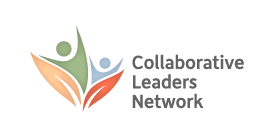Develop a provisional process design explaining the logic and outputs of each phase in order to garner participants’ early commitment to the process and the products.
Most stakeholders will want some sort of road map of what is to come before fully committing to the process. That road map takes the shape of a provisional process design that builds on the findings of the background inquiry and formulates a clear path for the collaboration, with the caveat that it can be modified and adjusted by the stakeholders at their first meeting and along the way.
Foundational elements of the provisional process design include: the mission, key process phases, intended outputs for each stage, process issues for the group charter, as well as a tentative meeting schedule and location.
In essence, the drafting of this road map provides a framework for the subsequent group charter, which is one of the first tasks for participants when they convene. The process for developing a group document involves providing material for participants to respond to, having them review and revise, and creating a collaborative version.
It’s important that conveners and participants understand the process and agree with the intended outputs of each phase. Time spent upfront, clarifying assumptions about the purpose of the collaboration and laying out the principles of how the group will deliberate and make decisions, reduces conflicts about the process later on.
A process design provides participants with a tentative roadmap for the collaborative strategy.
